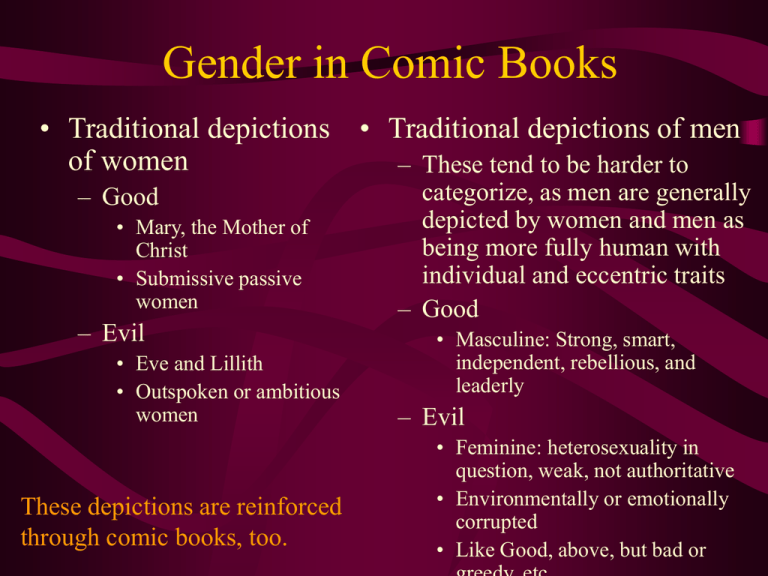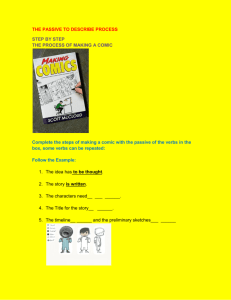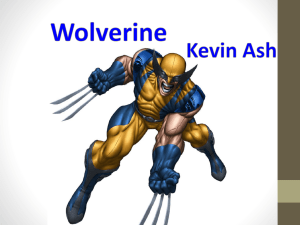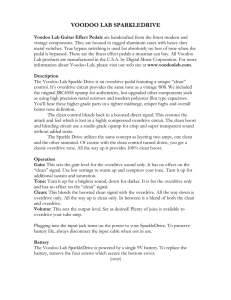
Gender in Comic Books
• Traditional depictions • Traditional depictions of men
of women
– These tend to be harder to
– Good
• Mary, the Mother of
Christ
• Submissive passive
women
– Evil
• Eve and Lillith
• Outspoken or ambitious
women
These depictions are reinforced
through comic books, too.
categorize, as men are generally
depicted by women and men as
being more fully human with
individual and eccentric traits
– Good
• Masculine: Strong, smart,
independent, rebellious, and
leaderly
– Evil
• Feminine: heterosexuality in
question, weak, not authoritative
• Environmentally or emotionally
corrupted
• Like Good, above, but bad or
Gender in Comic Books
• Comic books tend to
be read by men or
adolescent males
• Comic books tend to
be drawn by men
• This tends to add age,
race, and sexual
significance
Most
images of
women in
current
comics are
sexualized;
the women
are
portrayed
as objects
Consider this lawyer from Spawn
The Images of Women in Comic Books tend to
Correspond with Cultural Ideals, as well.
Consider these images of the popular character Jean
Grey from The X-Men
1970s
1980s
Notice that the character’s dimensions
change as the figure is rotated
Notice that Racial Stereotypes are Exploited also.
1970s
Storm
with
obvious
“African”
heritage
1980s Storm
with a much
more
aerobicized
punk look
Another image from The X-Men
The 1980s
Asian Psylocke
Cyclops
1963
Wolverine
1984
2004
• The Male Body has
become more idealized,
more ‘masculine,” as
well.
Wolverine’s Abilities
Consider these images from Ascension
Late 1990s
This is the
same
character
from
different
angles.
Notice
that her
miniscule
waist
from the
front is
larger
from the
back.
A couple more from Ascension
Some modern
comics come
with
centerfolds
They idealize
men, as well,
and sexualize
children
Sex is not just a titillation technique but a
“necessary” part of the story line many
times. Consider the 1990s Voodoo . . .
In Voodoo, the main character is a stripper who gets
a “super” power when she strips. She mesmerizes
men, communes with the Voodoo god, and learns her
enemies’ secrets.
A couple more
from Voodoo
Again notice racial and
ageist stereotypes at work,
and proportions changing
as a character changes
position—not to mention
nudity
Of course, sometime sex is the only story line. Nudity
is very prevalent in the late 1990s Fathom. In fact, it
was their initial marketing plan.
The Fathom
marketing strategy
was to interest male
readers in the naked
female character.
This was successful
enough to spawn a
swimsuit issue. In it,
many of the
characters do not, of
course, actually wear
swimsuits.
Bringing us into the 2000s, we have a
“feminist” twist, The Magdalena.
Here,
medieval
history meets
fantasy and
sexuality, as
female
warriors of
the Christian
God battle
His enemies.
Cover Art
The
Magdalena’s
Worst Enemy,
Lillith
The Implications of These Images
• Girls are being sexualized at younger and younger ages
• Women are made to feel that their beauty is the most
important aspect of their existence
– Women are more likely to be less satisfied with
themselves physically
– Women are more likely to try to change to please others
– Women are more likely to be discriminated against based
on these stereotypes
– Women are more likely to be victims of violent crime
• Men are likely to see women only in terms of beauty
• Men may become less satisfied with themselves, as well






